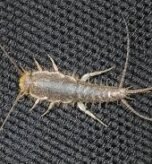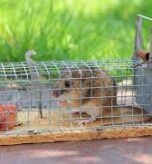Managing a wasp nest around your home or business is a common concern, especially during the warmer months when wasp activity is at its peak. While wasps play a valuable role in the ecosystem, their presence can pose significant risks to your health and property. This guide offers an in-depth look at detecting a wasp nest, understanding the dangers, and exploring effective management strategies, including both professional and DIY approaches.
Identifying a Wasp Nest on Your Property
Spotting a wasp nest early is crucial for effective and safe management. Wasps build their nests from chewed wood fibers mixed with saliva, giving them a distinct, papery appearance.
Key Signs of a Wasp Nest
Several signs can indicate the presence of a wasp nest on your property.
- Constant Wasp Activity: If you see wasps consistently flying in and out of a specific hole or area, you likely have a nest. This activity becomes more noticeable from July onwards as the nest grows. Wasps tend to follow the same flight path when entering and exiting.
- Strange Noises in Your Walls: Odd scratching or cracking sounds coming from a wall could mean wasps are actively building their nest inside a cavity. You might also notice a brown mark on an interior wall where they are trying to expand.
- Wasps Indoors with Windows Closed: Finding dead or lethargic wasps on a windowsill, especially in a room with closed windows, suggests a nest is nearby—often in the loft or a wall cavity.
- A Directly Sighted Nest: While many nests are hidden, you might spot them in garden sheds, bushes, or even in a hole in the ground.
The Growth and Construction of a Wasp Nest
A wasp nest grows significantly throughout the season. A queen wasp emerges from hibernation in April and starts building a small nest, about the size of a ping-pong ball. If the nest survives any early frosts, it will continue to grow, reaching the size of a football in about three months. By late summer, a mature nest can house up to 10,000 wasps. These nests are typically used for only one season.
Assessing the Risks of a Wasp Nest
A wasp nest, especially from social wasps like yellowjackets and hornets, can pose serious threats that demand careful attention.
The Dangers of Wasp Stings
Wasps are known for their aggressive nature, especially when they feel their nest is threatened. Unlike bees, which sting once and die, wasps can sting you multiple times. A key danger is the alarm pheromone a wasp releases when it stings. This chemical signals nearby colony members to join the attack, which can lead to multiple stings. While most stings cause temporary pain, for those with allergies, a wasp sting can trigger anaphylaxis, a life-threatening condition that requires immediate medical help.
Potential Damage to Your Property
Beyond the threat of stings, a wasp nest can also cause structural damage. Wasps can chew through materials like wood and drywall to create space for their nests. A nest built inside a wall can exert outward pressure, leading to warping or other issues.
Strategic Approaches to Wasp Nest Removal
The decision to remove a wasp nest depends on its size, location, and the potential risk it poses. Not all nests need to be removed, especially if they are in low-traffic areas.
When to Hire a Professional for Wasp Nest Removal
Hiring a professional pest control service is often the safest and most effective option, especially in these situations:
- Large or Inaccessible Nests: Professionals have the right equipment to handle large nests or those in hard-to-reach places like high trees, attics, or inside walls.
- Allergy Concerns: If anyone in your household has a known allergy to wasp stings, professional intervention is strongly recommended.
- Safety and Uncertainty: If you are unsure about the wasp species or how to safely remove the nest, it is best to consult an expert.
- Property Damage: For a nest that is causing structural damage, a professional can manage the removal while minimizing further harm.
DIY Wasp Nest Removal: Methods and Precautions
You can attempt to remove a small, easily accessible wasp nest yourself, but you must do so with extreme caution.
The Best Time for DIY Removal
The best time for DIY removal is after dark when most wasps are in the nest and are less active. Use a red light, as wasps are less sensitive to it. Alternatively, tackling a nest during rainy weather is effective because wet wings make it hard for wasps to fly.
Recommended DIY Techniques
- Insecticidal Sprays: Use a product specifically designed for wasp control. Apply it directly to the nest entrance at night.
- Soap and Water Solution: A mixture of dish soap and water can suffocate wasps. Spray the entire nest from a safe distance.
- Physical Removal: For a very small, exposed nest, you can carefully place a garbage bag over it, seal the bag, and dispose of it. You must wear full protective gear for this.
Essential Safety Measures for DIY Removal
Safety is paramount when dealing with a wasp nest.
- Wear Protective Clothing: Cover your entire body with thick clothing, including long sleeves, pants, gloves, and a beekeeping veil to protect your head and face.
- Maintain Your Distance: Stay a safe distance from the nest to avoid provoking the wasps.
- Do Not Swat: Swatting at wasps can trigger an attack and the release of alarm pheromones.
- Be Prepared for a Sting: If stung, leave the area immediately to avoid more stings. Clean the site with soap and water and apply a cold compress.
Preventing a Future Wasp Nest
Once you have removed a wasp nest, take steps to prevent new ones from forming.
- Eliminate Food Sources: Keep garbage bins tightly sealed and clean up food spills immediately.
- Seal Entry Points: Patch up any cracks in your home’s foundation, siding, and where utility wires enter.
- Use Decoy Nests: Hanging fake wasp nests can deter new queens, as they are territorial.
- Try Repellent Plants and Scents: Plant wasp-repellent herbs like peppermint, eucalyptus, and marigolds. Wasps also dislike the smell of vinegar and cinnamon.
Conclusion: A Balanced View on Wasp Management
While a wasp nest can be a source of anxiety, wasps are also beneficial insects that help control other pests. The decision to remove a nest should be based on a careful assessment of the risk. For complex or high-risk situations, professional pest control is the safest solution. By understanding wasp behavior and implementing preventive measures, you can effectively manage their presence and maintain a safer environment.



